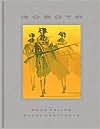Sometimes some books make way to our hands with a purpose. Marina Nemat’s Prisoner of Tehran is such a one for me. I bought this book, thinking as one of the other books that detail the troubles in a Muslim dominated society. But the book captivated me from the first page itself and opened up a world that was totally alien to me.
Marina Nemat’s Prisoner of Tehran is an autobiography of the author’s life in ‘Evin,’ the notorious prison in Tehran. Aged sixteen, Marina Nemat from an expatriate Russian family in Iran got arrested for reasons that may be incomprehensible for people outside Iran. The two years that she’d spent at Evin contoured the rest of her life. The tortures and painful memories at a time encumber Marina and at the same time give her an insight to the world outside.
The narration is interwoven between Marina’s memories of life inside and outside the Evin. As any other girl in Iran during Iranian revolution of 1979, Marina Nemat also had to witness tragedies happening around her and to suffer the loss of her dear one. This must have sowed the seeds of self assertion in her. However, her modest actions for justice changed her life dramatically.
After being arrested by the revolutionary guards in 1982, Marina Nemat was tortured and later sentenced to death in Evin. However a prominent guard named Ali Mousavi took an interest in Marina and she was taken away from death to the position of his secret bride. Marina had to get converted into Islam during this time. All along her life with Ali, Marina grew hopeless of her return to the life she’d always cherished. She was growing accustomed to love Ali and bear him the first child, when Ali got shot by the revolutionary guards involved in a conspiracy against him.
Ali’s last words to his parents saved Marina from the life in Evin. As she puts it, Ali had saved her life twice, once from the gun point and the second time from the life at Evin. Marina returned to her life with her parents who were unable to protect her during all these mishap. She then took the courage to marry Andre-her love before arrest-against the Islamic law. Though she got the threat of arrest once again for this, Ali’s parents and friends lend the support for Marina.
Marina and André decide to leave for Canada. Though her parents couldn’t help her, her guardian angel again came for help and Andre could secure the money needed for the security deposit at Evin. Life turned out to be normal for some time at Canada for Marina. However soon the memories returned and nightmares began. None had asked her about the life at Evin and the painful memories suffocate her. Soon Marina out poured her memories into the paper and here came out one of the most edifying memoirs- The Prisoner of Tehran.
After Anne Frank’s The Diary of a Young Girl and Khaled Hosseini’s The Kite Runner, this novel got the same effect on me. Even though Marina Nemat hasn’t listed all the atrocities that had happened inside Evin, her writing is apt for evoking the realization of suffering to the reader. Through the form of fiction, the book also educates the reader of the political scenario of Iran prior to and after the Iranian revolution.
Marina also draws the futility of violent revolutions through a comparison of her life with that of her grandmother’s. Her grandmother had suffered losses similar to hers during Russian revolution. However these new governments never proved to be better than the previous one to provide a better living for the society. People suffered and suffered!
It seems, the atrocities that are still happening with Evin, also prompted Marina to write this memoir. She has dedicated this book also to Zahra Kazemi, the Canadian-Iranian journalist who got brutally killed in Evin in 2003.
Marina Nemat presently works with people who assist social welfare. Her second book After Tehran: A Life Reclaimed got published in Septmeber 2010. To know more about Marina Nemat also visit her website http://www.marinanemat.com Marina Nemat’s Facebook Profile http://www.facebook.com/?ref=home#!/pages/Marina-Nemat/56366503068
Afterword: Just after reading Prisoner Of Tehran, I took the courage to mail her. Her reply showed her real self, “There is a lot of suffering in this world, and if we don't know about it, we cannot help it.”





.gif)
